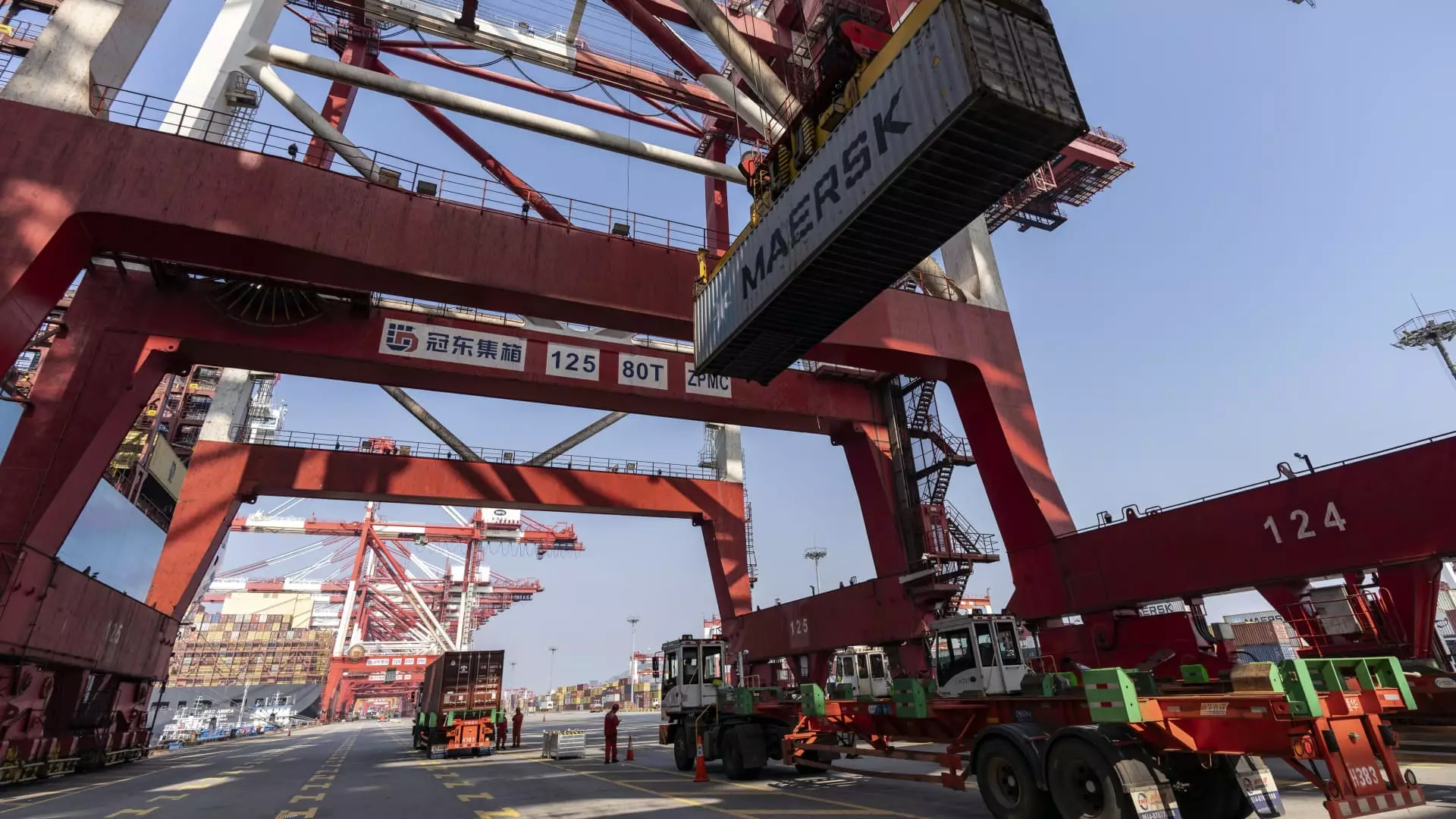China’s economic landscape is often a tapestry of complex interdependencies, so it comes as a surprise when key indicators suggest something less than vigorous. The latest customs data from September has raised a red flag regarding the performance of the world’s second-largest economy, revealing that both exports and imports fell short of analysts’ expectations. This article will explore the nuances of the latest trade figures, their implications for China’s economy, and the potential obstacles that lie ahead.
On face value, the data released shows a modest increase in exports, with a reported rise of 2.4% year-on-year in U.S. dollar terms. Likewise, imports inched up by 0.3%. Yet, these figures are well below market expectations, which had forecasted an increase of 6% in exports and 0.9% in imports. This discrepancy raises crucial concerns about the efficacy of traditional growth drivers within the Chinese economy, particularly in light of an environment characterized by sluggish consumer spending and a destabilized real estate market.
Analysts often herald exports as a cornerstone of China’s economic vitality; however, the current realities beg a reevaluation. Zhiwei Zhang, a respected economist from Pinpoint Asset Management, pointedly notes that turning fiscal policy around is essential for sustained growth into the following year. As trade tensions escalate—especially with the United States and the European Union imposing tariffs on Chinese goods—expectations for robust export growth may need recalibrating.
In a global economy intricately woven with interdependence, the repercussions of tariffs can be widespread and devastating. Following the implementation of increased tariffs on Chinese-made electric cars and other goods by the U.S. and EU, one cannot overlook the direct effect on trade volumes. Notably, despite a rise of 2.2% in exports to the U.S. this past September, the troubling implications of diplomatic friction remain clear. In contrast, the robust 6.7% increase in imports from the U.S. raises questions: Is China overselling itself in terms of exports while relying increasingly on foreign goods?
In the broader context, China’s exports to the Association of Southeast Asian Nations—the country’s largest regional trading partner—saw a welcome increase of 5.5%. However, the declines in key partnerships like the European Union (exports up 1.3%, imports down 4%) and a significant drop in rare earth exports by more than 40% lend credence to the notion that trade patterns are shifting in response to geopolitical pressures.
While international trade figures paint a mixed picture, the domestic demand scenario is a concern. A notable decline in crude oil imports by 10.7% in dollar terms signals a chilling effect on industrial activity, reflecting a decrease in consumption in an economy reliant on infrastructure and manufacturing. Although imports of natural gas and coal climbed, breathing life into some sectors, the overall picture seems bleak.
Indeed, the core consumer price index rose a meager 0.1% year-on-year, its slowest growth since February 2021. Coupled with falling tourism-related prices despite key holiday periods, the signs suggest that domestic consumer sentiment remains weak, raising questions about the economic recovery.
In response to these unfolding challenges, China’s Ministry of Finance has alluded to a reconsideration of its fiscal strategies. Analysts note that fiscal expenditure could stimulate sectors crucial for economic growth. According to Zichun Huang at Capital Economics, increased fiscal spending may provide a short-term boost to demand for industrial commodities, at least for a quarter or two. This anticipatory alignment presents a glimmer of hope amidst worrying trends—though the effectiveness of such measures remains an open question.
The upcoming release of third-quarter GDP data and other essential economic indicators will shed further light on the trajectory of China’s trade and broader economy. As market conditions fluctuate, significant investor focus will inevitably center on governmental efforts to recalibrate fiscal policies and stimulate consumption.
Ultimately, the latest trade data from China not only illustrates the fragility of its export-dependent framework but also uncovers the systemic vulnerabilities that threaten to hinder growth in domestic consumption. As global trade dynamics shift and domestic demands stutter, the Chinese government faces an imperative: to craft reinforced fiscal and trade policies that can withstand both internal and external pressures. In navigating this complex terrain, only adaptable and responsive strategies will sustain growth and foster resilience in one of the world’s most significant economies.

